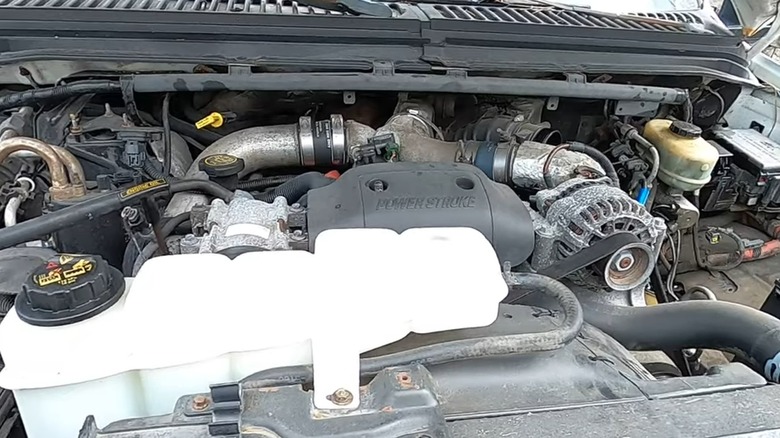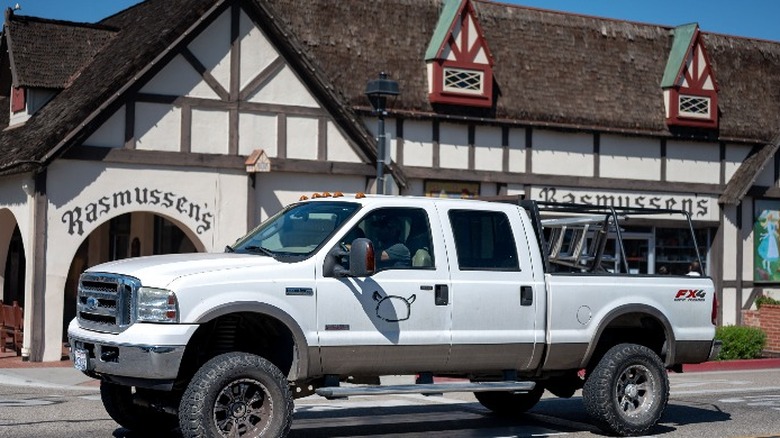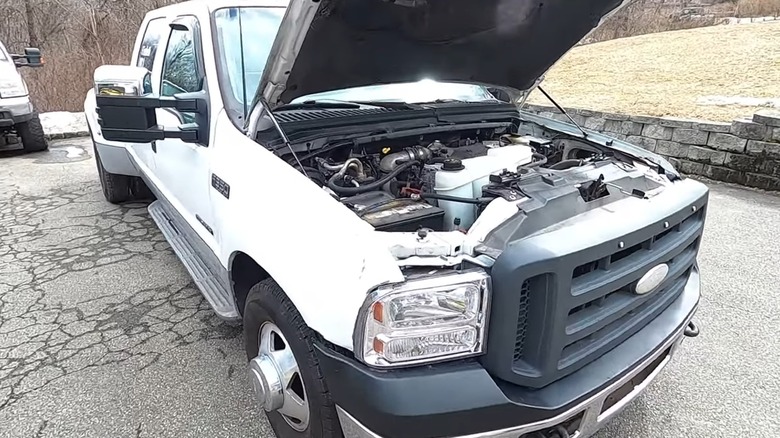The Best And Worst Years For The Ford 7.3L Power Stroke V8 Engine
Among diesel enthusiasts, few engines have reached the same levels of fame and prestige as the 7.3-liter Power Stroke. The 7.3L motor powered the Ford F-Series from 1994 to 2003 and represents the first iteration of the Power Stroke engine lineup. It was replaced by the 6.0L midway through 2003 but remains one of the most popular and famous engines in the Power Stroke family. The motor is renowned by Ford fans and diesel lovers alike for its reliability, durability, and upgrade potential. When drivers properly care for the 7.3 and stick to a regular maintenance schedule — including routine oil changes, coolant flushes, and transmission services — it's not unusual for these engines to last more than 500,000 miles.
However, not all 7.3L Power Stroke model years are equal, and a few model years are known for being less reliable and more prone to defects. Some of the most common issues to plague the 7.3 include camshaft position sensor failure, exhaust back pressure valve malfunction, fuel filter housing leaks, and turbocharger up-pipe leaks. If you're in the market for a 7.3L Power Stroke pickup or planning to buy a used 7.3 for a project build, you'll want to look out for these problems and avoid a few model years. Let's take a deeper look at those common issues and explore the best and worst years for the Ford 7.3L Power Stroke.
The best years
When it comes to the best years for the 7.3L Power Stroke, most experts and enthusiasts agree that the 7.3 peaked between 1998 and 2000. The 1999 model, in particular, is considered to be the best of the best. The motor saw a series of changes and updates in 1999 that led to significantly increased performance. Some of those advancements include new automatic and manual transmissions, an enhanced intercooler for the turbocharger, an improved oil cooling system, and a dual injector setup that vastly increased the engine's combustion performance. The 1999 7.3 is known to be extremely dependable due to these updates and easy to maintain due to the low cost of parts and sizeable engine bay. While the 1998 model doesn't include these updates, it's free of many of the issues that plagued its predecessors and is considered one of the best years for that reason.
After 2000, the 7.3 began experiencing a series of malfunctions that led to its replacement in 2003. So, if you're looking for a used 7.3L pickup or engine, your best bet is to stick with the years 1998-2000.
The worst years
Model years 2001 to 2003 were the worst for the 7.3L Power Stroke. These engines were plagued by issues ranging from excessive noise to failure of the camshaft position sensor and fuel leaks. Beginning in 2001, the 7.3L Power Stroke developed a reputation for excessive engine noise. While this issue was never diagnosed definitively, most experts place the blame on the split-shot fuel injectors that Ford was using at the time. Throughout the next couple of years, things only got worse for the 7.3. The engine became notorious for camshaft position sensor (CMS) failure. When the CMS fails, the engine's timing system will be disrupted, which can result in difficulty starting the vehicle. Other issues that led to the 7.3's replacement include fuel leaks due to faulty fuel filter housings, turbocharger performance problems, and overheating due to a malfunction of the exhaust back pressure valve (EBPV).
Outside of model years 2001 to 2003, the years between 1994 and 1997 are also known to be less than perfect. The engines produced during these years struggled with an electrical issue stemming from a faulty under-valve harness connector. This issue prevented components like the glow plugs and fuel injectors from working together correctly and led to misfires and excessive vibrations.


